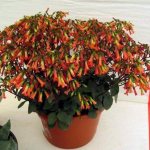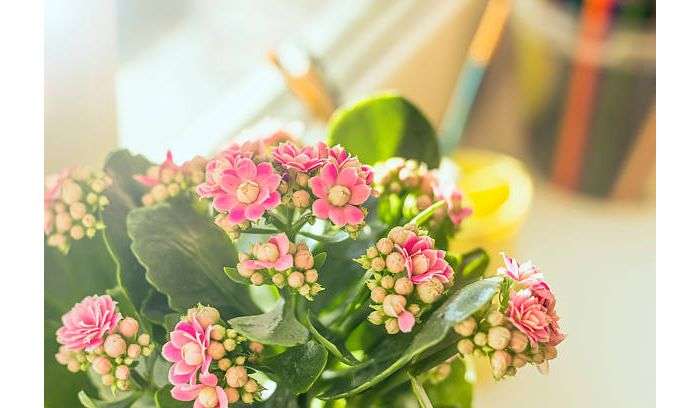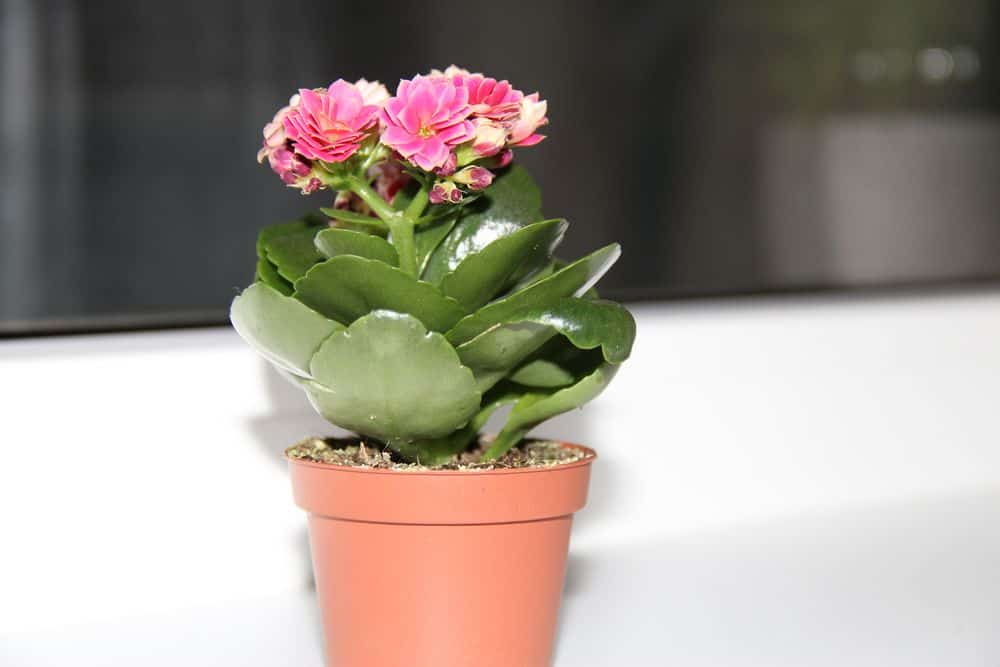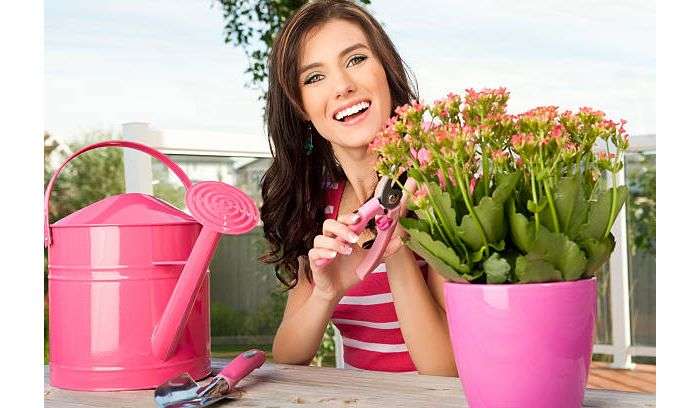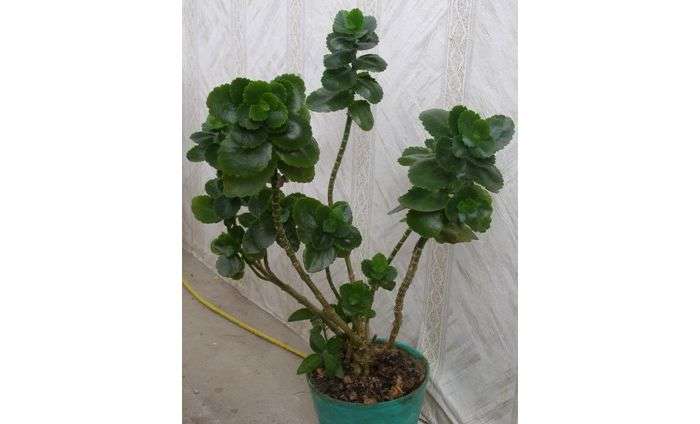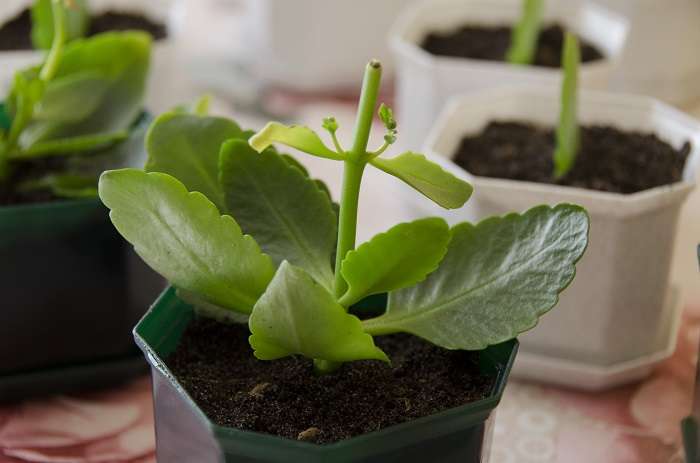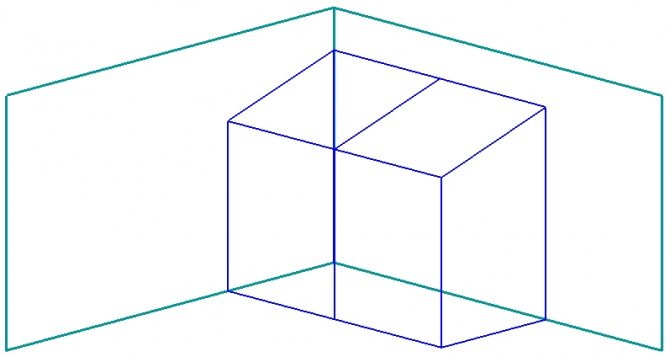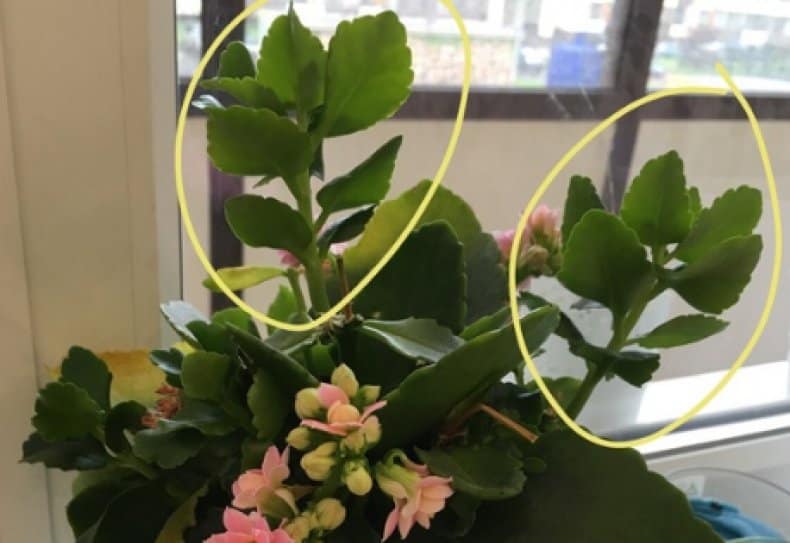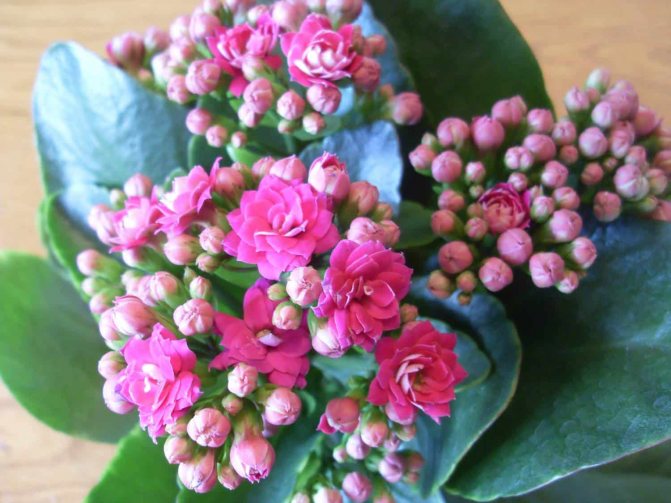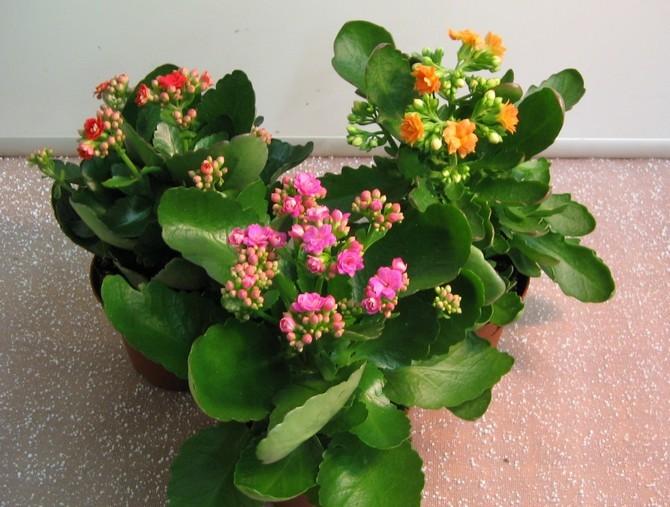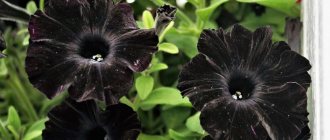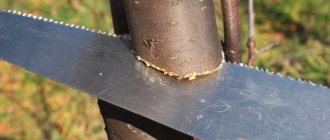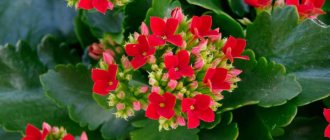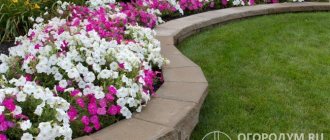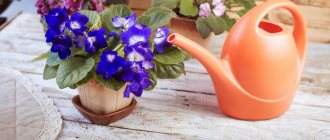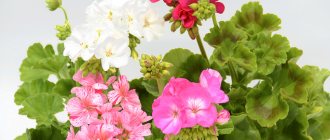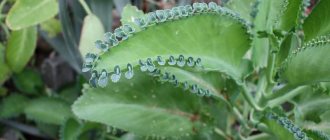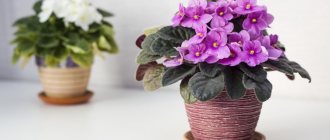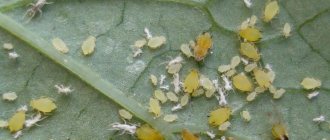Why trim Kalanchoe?
The Kalanchoe flower is characterized by the rapid growth of shoots. If you do not participate in the formation of the crown of the plant, then it takes on a form that is far from ideal.
Pruning Kalanchoe has several goals.
- Pinching of the upper shoots to form a beautiful crown and to maintain a compact, rounded shape. The top of the plant actively stretches up in the spring. It needs to be pinched, then the bush will grow in breadth and acquire a decorative appearance.
- When the bush is rejuvenated, old shoots are removed, which eventually shed the lower leaves. Such parts of the flower become unattractive.
- Timely removal of wilted flower stalks is necessary to prevent infestation and for lush flowering.
- Pruning to maintain the health of the bush, as a result of which the sap is evenly distributed over all shoots and leaves. A healthy plant with fleshy leaves is formed, resistant to diseases.
There are about 200 varieties of Kalanchoe, which react differently to crown formation.
Kalanchoe varieties Blossfeld and Kalandiva calmly tolerate pruning. Their crown can be safely formed without fear of harming the plant. Some hybrids with yellow and white inflorescences react painfully to pruning, so only the tops of them are pinched.
What you need to know before pinching
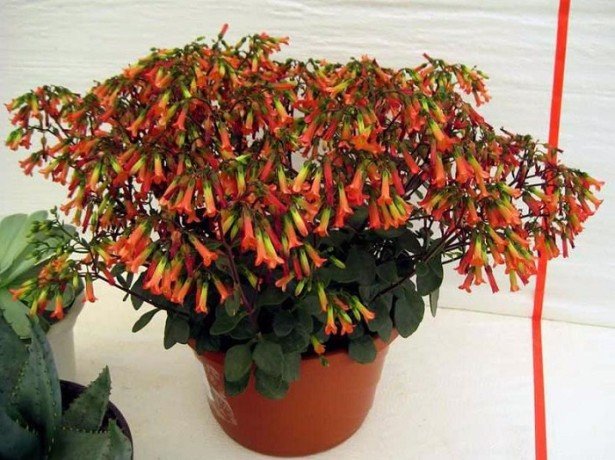
The heroes of our article refer to plants that have been used since ancient times for medicinal purposes.
The heroes of our article refer to plants that have been used for medicinal purposes since ancient times. From their leaves squeezed juice, which has an anti-inflammatory effect, used on wounds, burns, and even from the "scourge of humanity" - the common cold (from which, until now, there are almost no drugs more effective). Especially after pinching, Kalanchoë grows rapidly,
Recommendations and rules for the formation of a bush
Timely and correct pruning promotes the growth of a beautiful Kalanchoe bush with lush inflorescences. The process of forming a crown has nuances that you need to know.
- Before starting the procedure, the plant variety is determined, since the pruning method will depend on it.
- You can not cut off a recently acquired culture, give it time to acclimate to new conditions.
- You should not prune in the winter season when the flower is dormant.
- You need to use a sharp clerical knife or pruner. Disinfect the tool before use.
- Do not pick off the leaves and inflorescences with your hands - the plant will be damaged and begin to fade.
- It is necessary to prune Kalanchoe in the morning or evening hours, avoiding the action of bright sunlight on the culture during the procedure.
- Treat the cut points with crushed charcoal.
- Do not pinch the plant immediately after transplanting. Rooting and adaptation takes 2-3 weeks.
- There is no need to cut off Kalanchoe with signs of diseases and pests. They begin to form a bush no earlier than 15 days after the complete destruction of insects.
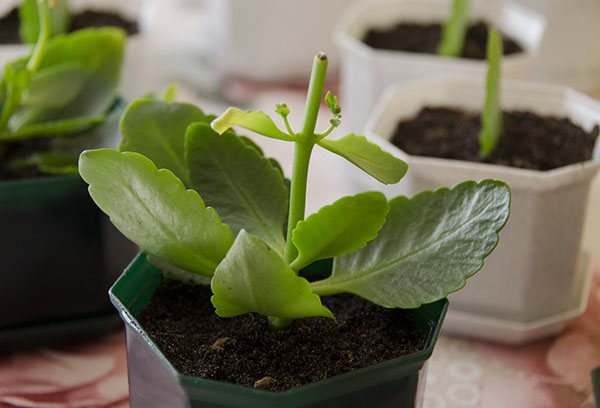

General rules
Pruning Kalanchoe consists in removing overgrown shoots, wilted buds and leaves that block adequate nutrition and healthy development of the plant.
It should be noted that there are several types of trimming:
- first;
- subsequent secondary (preventive);
- after flowering.
In the article, we will separately dwell on the nuances of each type of pruning, but first, we will consider the general component.
A well-sharpened kitchen or special garden knife is required for high-quality pruning, but a new stationery blade will do. Disinfect the instrument with alcohol in advance. Just in case, you can grab wood ash or crushed activated carbon with which you can treat the wounds that have appeared on the stem. Advice: in any case, do not pick off the leaves by hand, as this will damage the stem and further wilting of the flower.
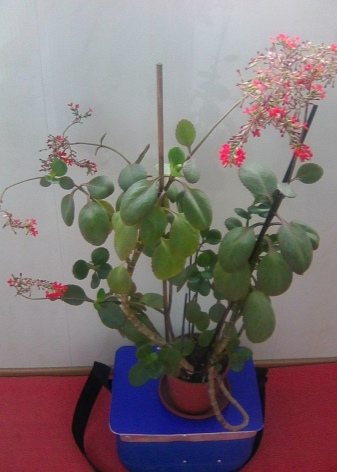

When not to carry out the procedure:
- in the first days after purchase or in a new place, since the plant needs to get used to the new environment and changed growth conditions;
- during the flowering period;
- in the acute period of the disease (dead buds and leaves are best removed 2 weeks after the succulent has fully recovered);
- 2-3 weeks after transplant;
- when exposed to direct sunlight (after the procedure, it is also recommended to protect the bush from direct ultraviolet radiation);
- in winter.
Initial and preventive pruning
The first pruning of the plant is done in the spring. It is worth remembering the basic nuances of the initial pruning at home.
- In the spring, a month after the Kalanchoe wakes up, you need to remove new, young shoots with leaves. To begin with, cut off two or three leaves on each shoot.
- After pruning, do not place the plant on a southern or southeastern window sill where exposure to bright sunlight is possible. Kalanchoe in such a place will begin to grow intensively, the shoots will quickly stretch out. The bush will lose its shape.
Preventive pruning is done as the flower grows. It is used for several reasons.
- In places where shoots and leaves are cut from the buds, new shoots appear over time in the axils of the leaves. Two or three sheets are also cut from them. This process can be continued until autumn, until the crown of the required shape is formed.
- To prevent the appearance of stem rot and other diseases, all damaged leaves and broken shoots are removed from the plant.
- As the Kalanchoe grows, old leaves are discarded and its base is bare. This spoils the appearance of the bush, and also interferes with the growth of young shoots. Therefore, the old parts of the flower must be gradually removed and thus rejuvenate the plant.
- In the summer season, the top of the plant will actively stretch upward and disrupt the shape of the bush. It is pinched to stimulate the growth of young lateral shoots.
Removal of shoots after flowering
Kalanchoe flower stalks are formed during short daylight hours. Therefore, flowering begins at the end of winter and continues throughout the spring. Some hybrid varieties may re-bloom in the fall, after which they need a dormant period.
If the Kalanchoe continues to grow in green mass at the end of spring and is not going to bloom, then pruning is carried out to stimulate flowering. To do this, remove 3-4 upper leaves on each shoot, so that the plant begins to grow in breadth and lay flower stalks.
After flowering, it is important not to let the twigs with crumbling petals dry completely. Pinch the peduncles immediately after wilting. In the places of pruning, buds with new buds appear, and space is also made available for new shoots with leaves.
Upon completion of pruning after flowering, you need to organize a rest for the plant. Conditions of detention during the rest period:
- rare watering - once every 3 weeks;
- dark place, without sun rays;
- low air temperature - up to +16 °
Two months after the rest, the Kalanchoe begins to grow actively.
Shoots with flowers after their wilting, it is better to remove almost at the root, so as not to provoke rotting of the buds and the plant itself.
Pruning the Kalanchoe bush can be easily performed by both experienced and novice growers.Timely pinching of the top, removal of peduncles and damaged shoots is a condition for the growth of a healthy and lush crown of the Kalanchoe.
A well-formed bush has a rounded shape. Its shoots are evenly covered with foliage, buds with delicate petals are visible above the top.
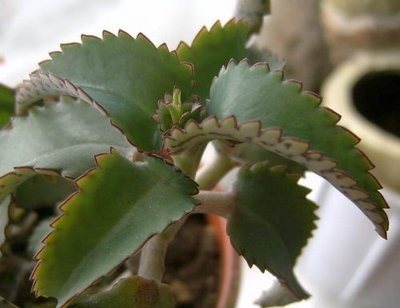

Home flowers
kalanchoe can be found in almost every apartment.
And although many give birth to a medicinal species at home for its medicinal properties, it cannot be said that decorative species are inferior to it in popularity.
The article below discusses how to properly produce home care for blooming Kalanchoe: pinch, trim, shape the crown, as well as a photo of the plant.
Green stems and foliage throughout the year, variegated and lush blooms make them very attractive decorations for any home.
More than 200 species have been discovered by scientists. Many are grown indoors. The most popular were Kalanchoe Cirrus and one-flowered, as well as Kalanchoe Blossfeld and Degremon.
Native to the tropics, all species are adapted to endure both drought and high humidity for a long time.
Moreover, they almost do not need fertilizers, they easily tolerate diseases and pests.
How to properly care for a decorative (flowering) Kalanchoe flower at home?
Temperature regime
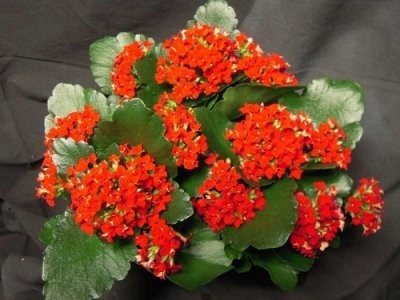

Optimum summer temperature for a blooming Kalanchoe - in the range from 23 to 29 degrees. A higher temperature is acceptable, but it does not hurt to increase the frequency of watering, since if there are flowers, they can dry out.
Although plant - tropical, it tolerates low temperatures well. In winter and autumn, at temperatures above 10 degrees, it is quite possible to expose it to fresh air.
Nevertheless, given the harsh climate of many regions of our country, in the cold season it will be safer indoors, away from sudden frosts and freezing winds.
After frostbite, only the root can remain alive. You will have to cut off almost everything except the root, and then wait for a miracle to happen and shoots appear.
Lighting
The houseplant Kalanchoe is quite unpretentious in care, including lighting. It can be positioned almost anywhere in the room where the sun's rays fall. Favorable conditions can be called both partial shade and diffused light.
Care after purchase
For indoor flowers, and especially for decorative Kalanchoe good home care is very important. First landing (transplant) Kalanchoe requires special attention. Immediately after purchase, the plant should be transplanted into another pot with new soil.
Most likely it has long outgrown its old pot, but remained in it for economic reasons. The soil should be changed, since it is not known what composition it has. For cultivation, pots with a diameter of 9 to 18 cm are used.
The most common sizes are 12-15 cm. The pot should not be too large, as this can cause bay and death. But too small a pot will not be so critical.
The worst thing that can happen is the plant will not bloom.
Transfer
Kalanchoe is growing very fast and therefore it is very important to replant it in a timely manner.
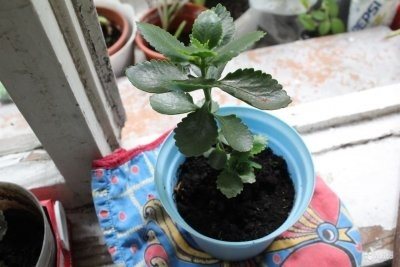

It is advisable to do this at least once a year, at the end of March.
Each new pot should be 2-3 cm larger than the previous one.
The transplant must be carried out very carefully so as not to damage the fragile stems and leaves.
The optimal soil composition should include turf, leaf and sand in equal proportions.
Pruning Kalanchoe blooming
Is it necessary and possible to trim Kalanchoe? The emergence pests or diseases sometimes forces pruning during flowering.
The process is quite simple - you just need to cut off diseased areas at the junction with healthy ones.
How to prune Kalanchoe after flowering?
In order for it to bloom in the future, it needs to arrange a period of rest.
How to properly cut a decorative Kalanchoe at home? For this:
After a dormant period plant return to the old place and with early summer fertilized.
How to form a crown?
Kalanchoe formation - a simple and long-term business. How to form a Kalanchoe? All that is required is to pinch off the tips of the shoots as they grow.
How to form a Kalanchoe flower if it is stretched out? Too elongated shoots need to be plucked off more radically, while sprinkling the cuts with ash or charcoal. Thus, volume will gradually appear.
How to pinch a Kalanchoe?
So is it necessary pinching Kalanchoe? Many owners often complain that their Kalanchoe does not bloom again.
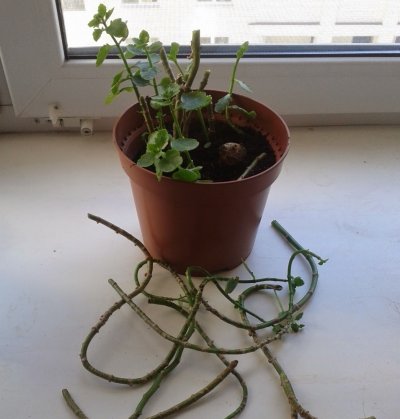

They don't even know that the lack of variegated buds may be only the lesser of many problems.
If some owners take a close look at their plant, they may notice the thinning of the shoots. This means that minerals are poorly supplied to this area.
And this can lead to the fact that the shoots dry out entirely. It is to solve this problem that pinching Kalanchoe.
Weak shoots can be pinched off anything: fingers, scissors, etc. It is advisable to do this slowly and carefully so as not to pinch off the excess.
But even if it happens, the wound can be easily curedby sprinkling it with ash or charcoal.
What else is good to know about pinching
There is one more moment when it is very desirable to pinch the Kalanchoe - if it should bloom, but still will not give buds. Please note that standing on the northern windowsill, the flower grows with noticeable effort and may not bloom. If it is in the south, it should be pinched before December, and if it looks to the west or east, on any convenient day. By caring for Kalanchoë in this way, you will undoubtedly receive gratitude from him.
Often gardeners ask a question specifically about the Kalanchoe Kalandiva, how to pinch this flower. The main thing to consider is that the plant must be thoroughly pruned immediately after flowering. Otherwise, the instructions are the same.
Whether it is necessary to pinch the Kalanchoe - everyone decides for himself and his green pet, without this operation the plant will not die. However, remember that the procedure can help the process of healthy, lush growth, as well as improve the aesthetics of the appearance.
It has been known since ancient times that Kalanchoe can be useful in the treatment of many ailments. For example, it will help with ear inflammations, various skin diseases and a runny nose. However, Kalanchoe is not only a medicinal plant, but also a beautiful lush flower, which, with proper care and timely pruning, will decorate and complement your interior.
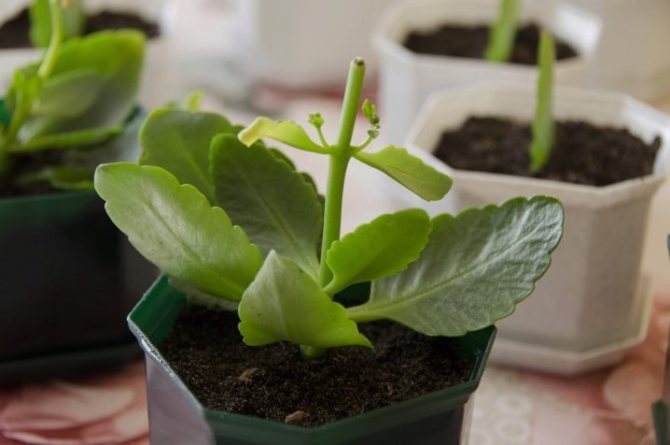

Planting and caring for the garden
Few know that Kalanchoe can be kept not only indoors, but also in the garden. But, growing (reproduction) at home much easier than outdoors.
How to care for a Kalanchoe flower outdoors? The plant cannot withstand temperatures below freezing... The soil should be of a neutral or slightly acidic composition with a nutrient layer thickness of at least 12 cm.
Seedlings should have a height of at least 10 - 12 cm and about 6 developed leaves. Fertilize the area before planting rotted manure, superphosphate and potassium salt.
After engraftment, in July and August need feeding in the form of nitrogen fertilizers. The distance between the plants is approximately 30 cm and the row spacing is 50 cm.
Before flowering, you need to loosen the soil at least 5 - 6 times.
What if it doesn't grow?
In such a situation, the owner should make sure that he has followed all the recommendations for Kalanchoe care.
It is also possible Kalanchoe does not grow due to existing diseases and pests.
They get rid of diseases and pests by pruning the affected areas and treating them with insecticides.
Useful video
A little about how to properly care for the Kalanchoe:
If you find an error, please select a piece of text and press Ctrl + Enter.


Kalanchoe is famous not only for its remarkable appearance and unpretentiousness, but is also used for medicinal purposes. Any florist is familiar with this plant. Our article will tell you about an important "ritual" that gives your green friend the final sophisticated appearance - how to pinch a Kalanchoe. Step by step instructions at your service.

